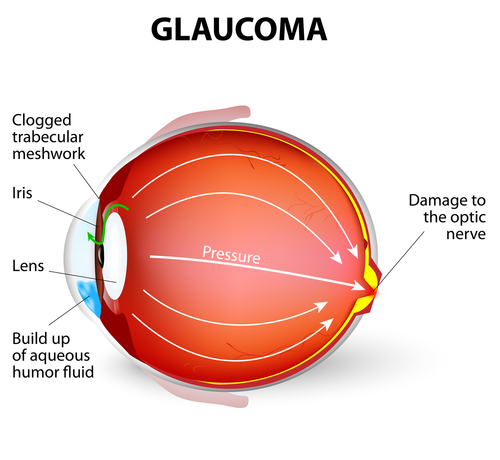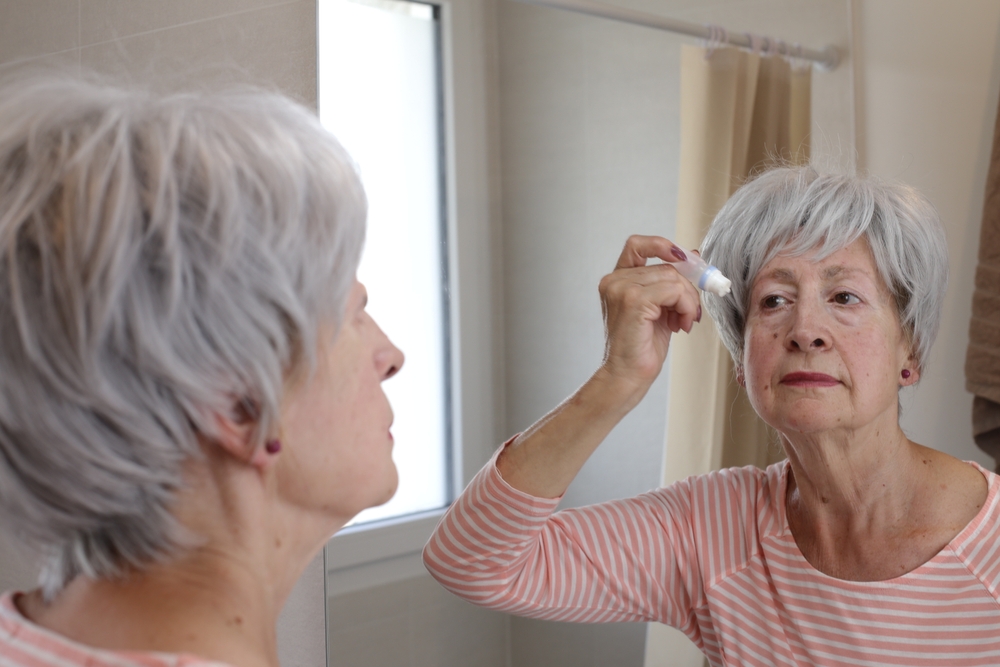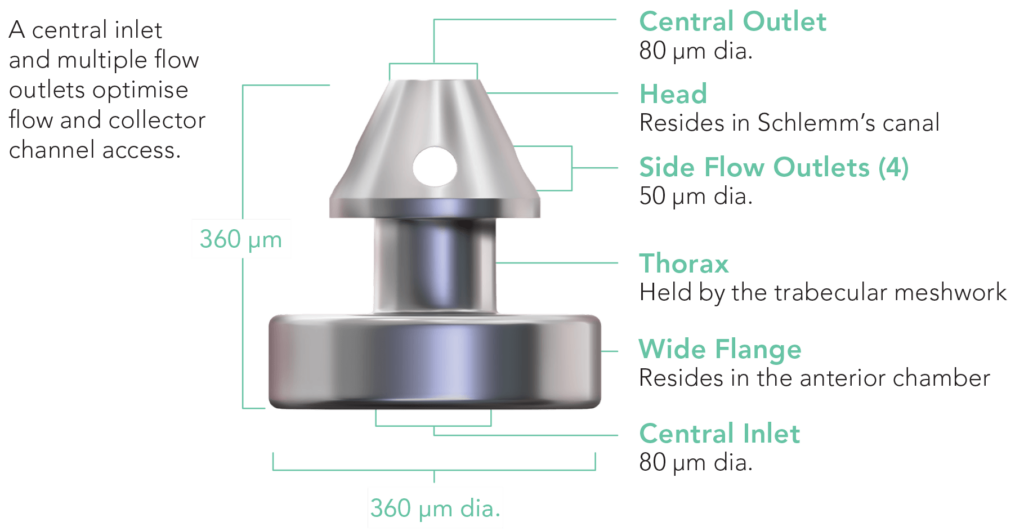Glaucoma, which affects an estimated three million Americans, is the second leading cause of blindness in this country. Some call it the “secret thief of sight” because many patients don’t realize they have it until irreversible vision loss has already occurred.
You can treat glaucoma and potentially prevent further vision loss by catching it early at an annual comprehensive eye exam. Keep reading to discover if eye drops are the only treatment available to treat glaucoma and what this could mean for treating the condition!
What is Glaucoma?

Glaucoma is a group of eye conditions characterized by damage to the optic nerve, which transmits visual information from the eye to the brain. That damage is usually caused by elevated intraocular pressure, though glaucoma can affect people with normal or even low eye pressure.
The two most common types of glaucoma are open-angle glaucoma and angle-closure glaucoma.
Open-Angle Glaucoma
Open-angle glaucoma accounts for 95% of all glaucoma diagnoses. This form of glaucoma occurs when the drainage angle within the eye remains open, but intraocular fluid cannot drain correctly, resulting in a pressure buildup in the eye.
It often develops slowly and does not cause immediate changes to a person’s vision. The symptoms of open-angle glaucoma include impaired peripheral vision, tunnel vision, eye pressure, blurry vision, halos around lights, and increased sensitivity to bright lights. These symptoms may be mild at first but worsen over time.
Angle-Closure Glaucoma
In angle-closure glaucoma, the drainage angle in the eye becomes blocked, leading to a sudden increase in intraocular pressure. People with angle-closure glaucoma may be unaware that they have the condition until they experience a sudden loss of vision.
Angle-closure glaucoma symptoms usually come on suddenly and include severe eye pain, blurry vision, headaches, and nausea. If someone experiences these symptoms, they should immediately seek medical attention to prevent permanent vision impairment or loss.
How Do You Treat Glaucoma?
There is no cure for glaucoma, and the damage done to the optic nerve is irreversible. However, with proper care, you can manage glaucoma.
All glaucoma treatments aim to lower intraocular pressure and preserve the quality of remaining vision. If you have glaucoma, prescription eye drops are the first treatment your eye doctor will likely try.

These eye drops help lower intraocular pressure. Sometimes, they will combine eyedrops with oral medications.
The eye drops and oral medications prescribed by your eye doctor aim to either reduce the production of intraocular fluid or increase fluid drainage. Advanced drugs like prostaglandin analogs, beta blockers, alpha agonists, and carbonic anhydrase inhibitors are commonly prescribed eye drops for patients with glaucoma.
Other Treatments for Glaucoma
While your eye doctor is likely to first try treating glaucoma with eyedrops, they are not the only glaucoma treatment. If eye drops are not controlling glaucoma, your ophthalmologist may recommend other treatments. These may include laser surgery, trabeculectomy, valve surgery, or iStent.
Laser Surgery
There are different types of laser surgeries, each serving specific purposes. They are usually quick procedures and performed as outpatient procedures. They include:
Selective Laser Trabeculoplasty (SLT)
Often used for open-angle glaucoma, selective laser trabeculoplasty targets the trabecular meshwork, where intraocular fluid drains, to improve fluid outflow and reduce intraocular pressure.
Laser Peripheral Iridotomy (LPI)
A laser peripheral iridotomy, primarily used for angle-closure glaucoma, creates a small hole in the iris, allowing fluid to flow more freely and relieving intraocular pressure.
Laser Cyclophotocoagulation
A laser cyclophotocoagulation is used in more advanced glaucoma cases. It targets the ciliary body, which produces intraocular fluid to reduce fluid production and alleviate pressure buildup.
Trabeculectomy
The trabeculectomy is the most common glaucoma procedure. It involves creating a new drainage pathway for fluid to leave the eye, lowering intraocular pressure.
During the trabeculectomy, your surgeon will create a small flap in the sclera (the white part of the eye). Creating a flap in the sclera makes a pathway to increase fluid drainage. They then cover the flap of the site, offering protection by the conjunctiva (the outermost covering of the eye).
A trabeculectomy cannot restore vision that has already been lost due to the effects of glaucoma. However, it can reduce intraocular pressure and prevent further vision loss.
Valve Surgery
Valve surgery, or drainage device surgery, involves implanting a small valve (or tube) in the front of the eye. This helps provide an alternative drainage path for intraocular fluid.
The most well-known ocular valve is the Ahmed valve. It is made of silicone and is invisible to the naked eye.
It may take the eye a few weeks to adjust to the valve. Success rates for valve surgery range from 60% to 80%. Valve implantation can reduce or eliminate the need for additional prescription eye drops.
iStent

One of the latest advancements in glaucoma treatment is minimally invasive glaucoma surgery (MIGS). The iStent is one MIGS procedure available at Batra Vision Medical Group.
During the iStent procedure, a one-millimeter titanium device called a stent is implanted in the eye to improve intraocular fluid outflow and lower intraocular pressure. iStent was the first minimally invasive implantation device approved by the FDA.
It is most effective at treating mild to moderate open-angle glaucoma. MIGS procedures, like iStent, are a considerable advance in treating early glaucoma.
Eye drops pose fewer risks and potential side effects, have shorter recovery times, and have less impact on the eye’s structures. Although eye drops are often the first treatment prescribed to patients with glaucoma, they are not the only treatment available.
If eyedrops alone aren’t protecting your vision from the effects of glaucoma, other treatments, like laser surgery, trabeculectomy, valve surgery, and iStent, could be a better fit.
Do you need to treat glaucoma? Request an appointment today at Batra Vision Medical Group in San Leandro, CA, to get the treatment you need!

 Follow Us!
Follow Us!